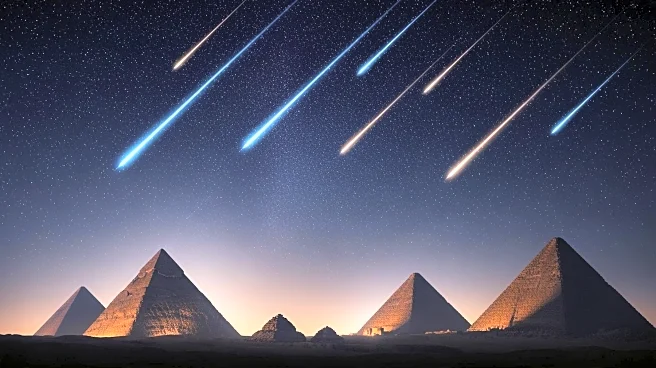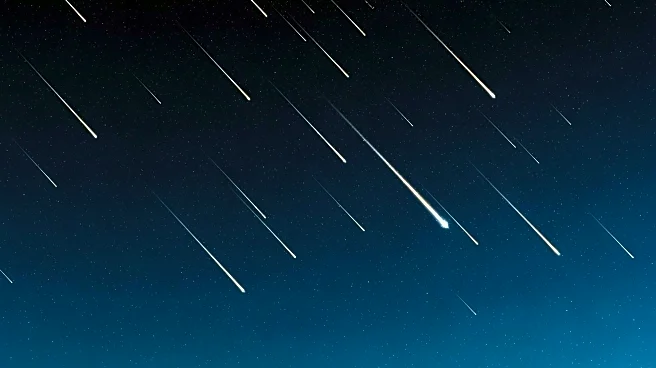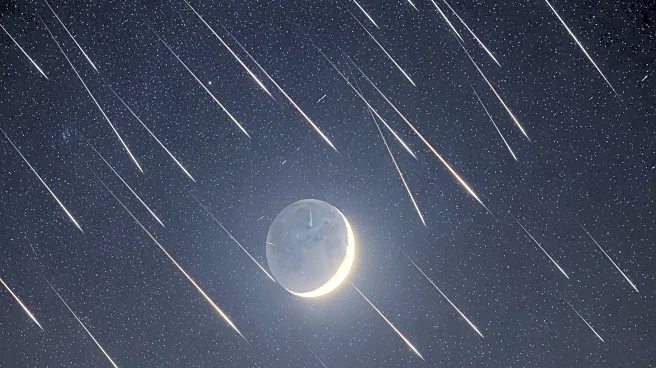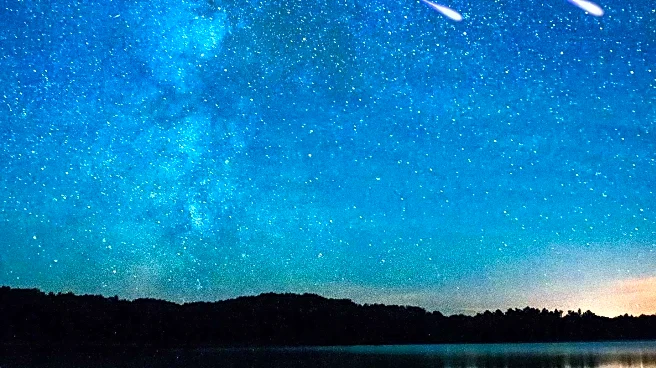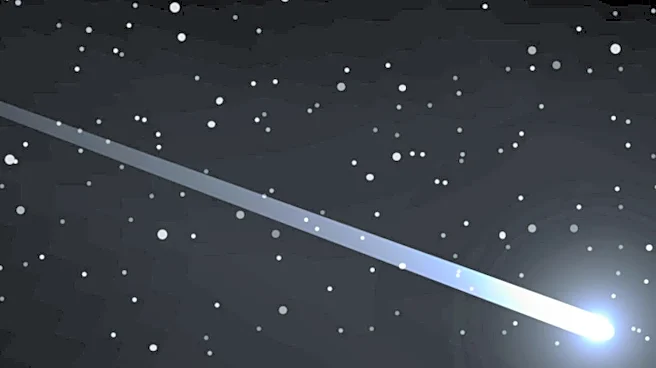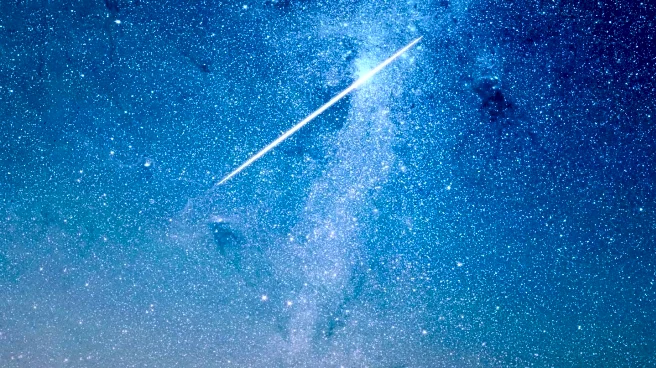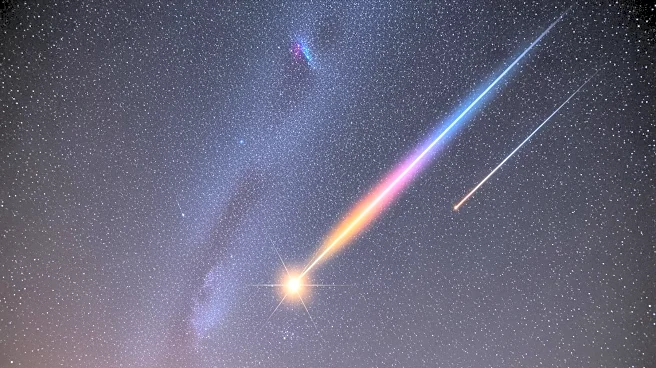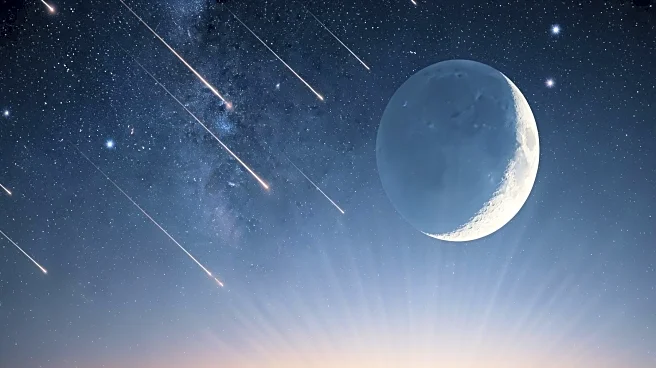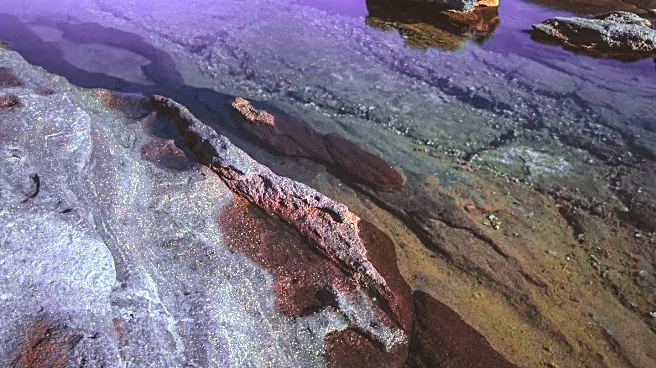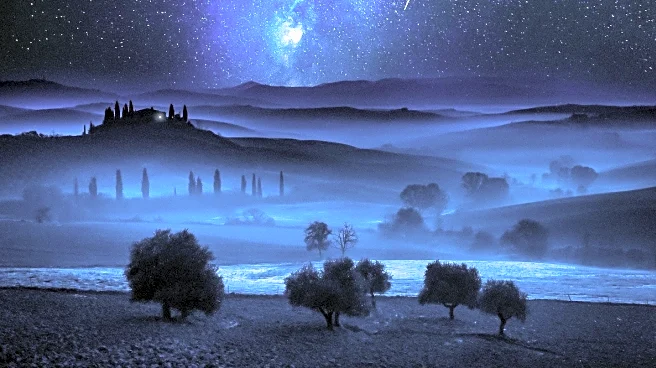What's Happening?
The Orionid meteor shower, peaking between October 21-23, provided a spectacular celestial show as debris from Halley's Comet entered Earth's atmosphere. Photographer Osama Fathi captured the event over
Lake Qarun in Egypt, showcasing meteors streaking across the sky near the constellation Orion. The shower coincided with a new moon, offering optimal dark sky conditions for viewing. The Orionids are known for their bright meteors, and this year's display was particularly vivid due to the lack of moonlight interference.
Why It's Important?
Meteor showers like the Orionids offer a unique opportunity for both amateur and professional astronomers to observe and photograph celestial events. These showers are not only visually stunning but also provide valuable data on cometary debris and its interaction with Earth's atmosphere. The Orionids' visibility across various regions highlights the global appeal of stargazing and the shared human experience of observing the night sky. Such events can inspire interest in astronomy and science education.
What's Next?
While the peak of the Orionid meteor shower has passed, stargazers can still catch glimpses of meteors in the following days. The American Meteor Society notes that viewing conditions will remain favorable, with rates of over 10 meteors per hour possible. Future meteor showers, such as the Leonids in November, will continue to provide opportunities for observation and photography. Enthusiasts are encouraged to find dark, clear skies away from city lights for the best viewing experience.
